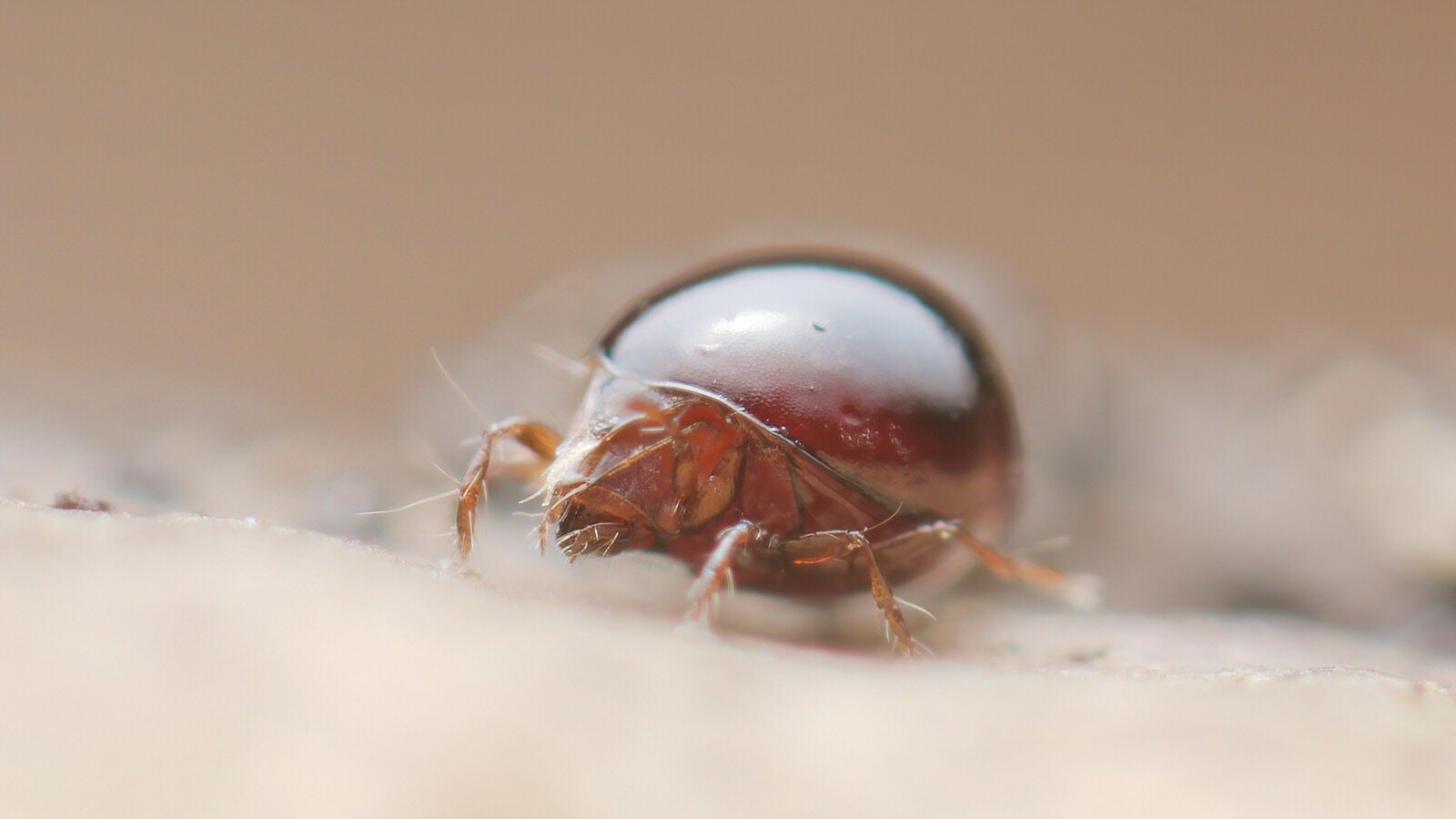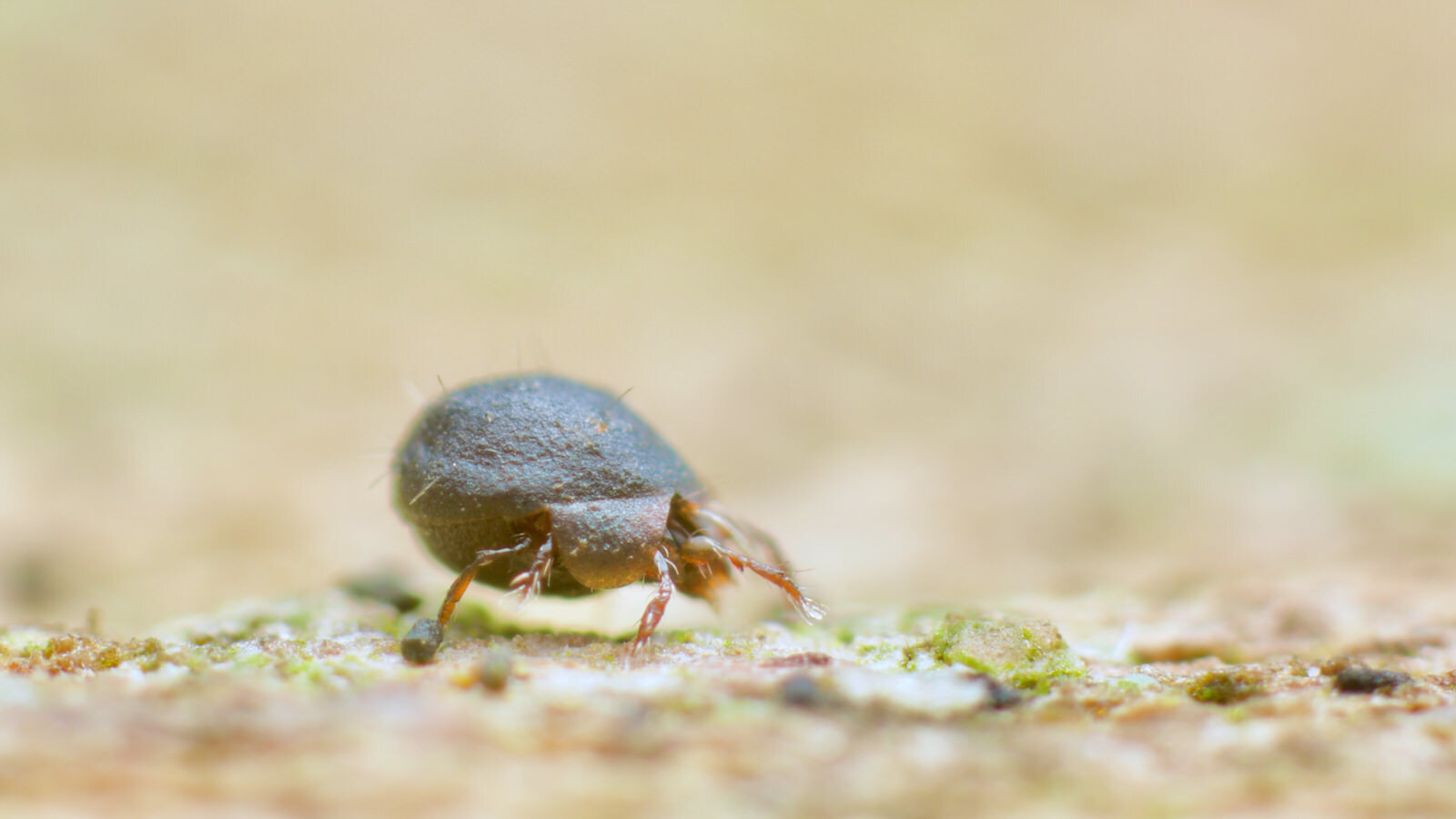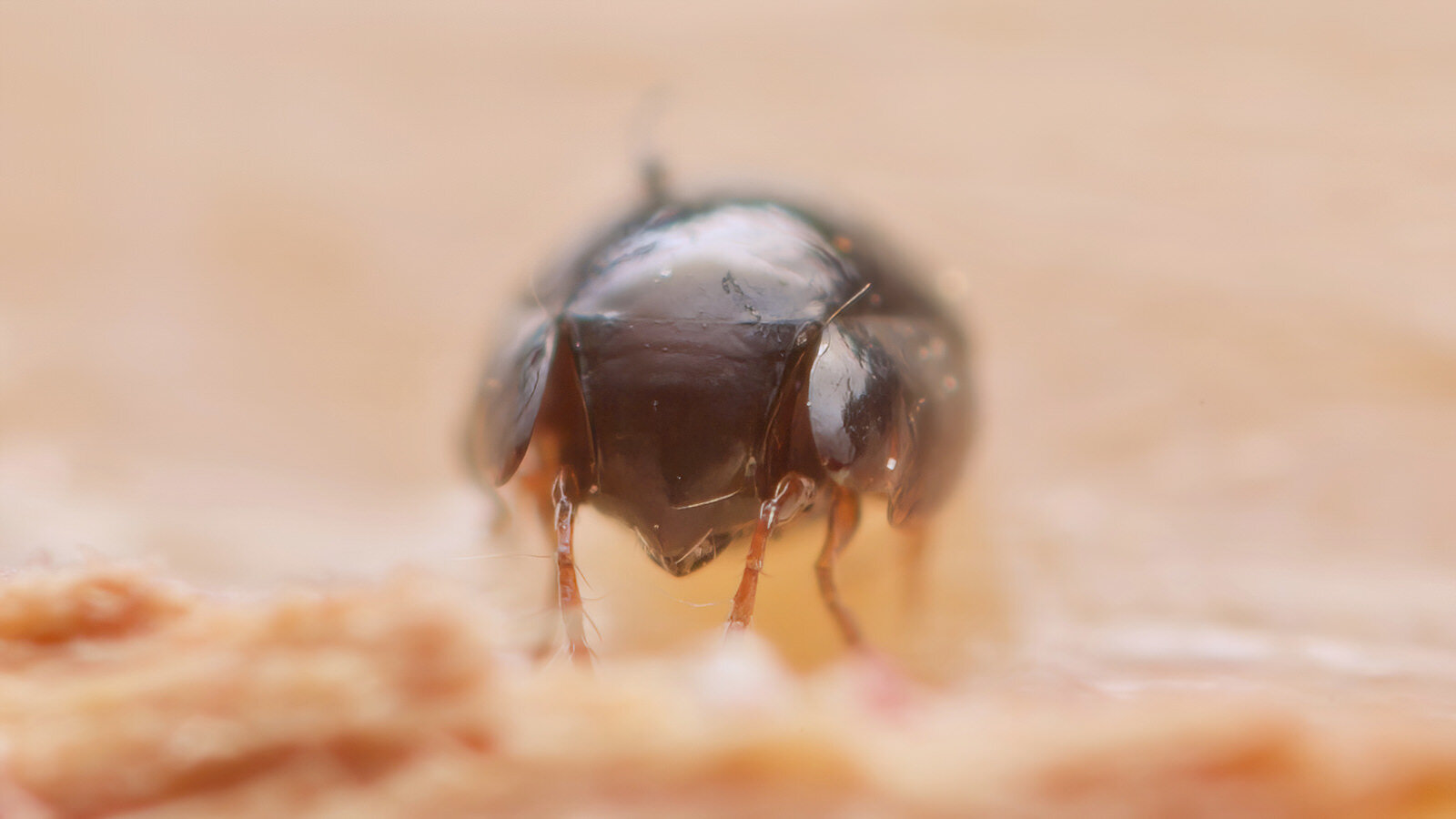
Oribatida
box mites, soil health
Traditionally, the order Oribatida (superorder Acariformes) has described the box/moss/beetle mites. Most are fungivores and detritivores, with a scattering of predatory species. Most adults are sclerotised.
Astigmata has recently been renamed Astigmatina, and has been placed as a cohort of Oribatida. This has slightly complicated the description of Oribatida. The Astigmatina are not so much associated with decomposition as they are with parasitising vertebrates and invertebrates alike, as well as some families following another interesting and possibly retro-evolutionary path as dust mites, together with many food and stored product mites. However, they can also be present in large amounts in some soils, where they are usually soft-bodied, tiny and white, with long setae.
An astigmatan mite, Dundon Beacon, Somerset UK July 2017
Many families in Oribatida have very distinctive chitinous flaps or pteromorphae. These are flaps that overhang and flank the legs like small wings, hence the name.
Galumnidae, NZ
Eupelops species, Somerset
Pergalumna dactilaris Mexico
Many of the families also have the ability to tuck their legs underneath their protective armour, called ptychoidy. This renders them immune from most predation, apart from being eating wholesale. The ability earned them the common name of box mites- like a closing box.
Steganacarus magnus forma anomala
Whilst no families of the Oribatida/moss mites are parasitic, they can be intermediate hosts to many larval tapeworm species, passing into the guts of vertebrates through ingestion.
Hermaniella granulata Butleigh, Somerset UK
As with Collembola, Oribatid mites are an important indicator of soil health in different environments, indicated by their abundance and diversity. It takes time for an Oribatid community to build due to their low fecundity. Along with many other slow-metabolising animals with similar low reproductive rates, the oribatidan can be relatively long-lived, at around two years, although this can increase sometimes up to seven years in colder climates. A very long time for an animal no more than 1.5mm big.
Oribatella species Shepton Mallet, Somerset UK
Oribatid mites are an important part of the diet of some poison frogs in Central and South America, contributing alkaloids which the frogs exude as poison.


























